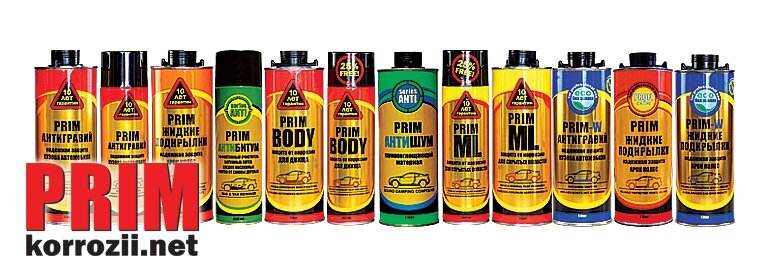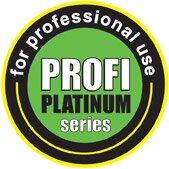Auto Parts Counterfeit Components Avoiding Dangerous Fakes
When you’re maintaining your vehicle, spotting counterfeit auto parts can be tougher than you think—and missing the signs could put your safety at risk. Cheap fakes often look convincing but carry hidden dangers that could lead to breakdowns or worse. If you want to protect your investment and those on the road with you, it’s crucial to understand how these counterfeits are slipping through the cracks—and what you can do to outsmart them.
Understanding Counterfeit Auto Parts
Counterfeit auto parts pose significant risks to vehicle performance and safety. These counterfeit products, often marketed through online platforms or packaged to resemble original equipment manufacturer (OEM) parts, frequently fail to meet established safety standards. Commonly counterfeited components include critical safety items such as airbags, oil filters, and spark plugs.
Particularly concerning are counterfeit airbag units, which have been linked to potentially fatal failures in the event of an accident.
Recent efforts by Customs and Border Protection (CBP) and the National Intellectual Property Rights Coordination Center have highlighted the scale of this issue. In March and June of 2024 alone, these agencies seized over 211,000 counterfeit automotive parts.
Moreover, investigations have connected at least three fatalities to these illicit products, underscoring the serious implications of using counterfeit components.
For consumers, it is essential to prioritize safety and reliability when purchasing auto parts. This entails sourcing from reputable vendors and remaining vigilant regarding the authenticity of such products.
By doing so, consumers can mitigate the risks associated with counterfeit auto parts and ensure the safety and proper functioning of their vehicles.
Identifying Types and Common Examples
When purchasing replacement auto parts, it is crucial to be aware that counterfeit components often appear legitimate at first glance. Common counterfeit products include critical items such as airbags, oil filters, and spark plugs, which can be found both online and in local automotive stores.
These counterfeit parts frequently mimic the labels and packaging of original equipment manufacturers (OEM), complicating the task of distinguishing them from authentic components.
Significant efforts have been made by agencies such as Customs and Border Protection (CBP), Homeland Security, and the National Intellectual Property Rights Coordination Center, which have seized thousands of potentially hazardous parts in recent months.
Reports indicate that at least three fatalities have been associated with counterfeit airbags, underscoring the serious implications of using substandard products. Such airbags may not deploy properly or might incorporate dangerous materials, thereby compromising vehicle safety.
To mitigate the risk of acquiring counterfeit parts, consumers are advised to consult trustworthy sources, such as Brand and Youtube Investigations. These platforms can provide valuable information to assist in identifying potential risks associated with counterfeit automotive components.
Scope and Recent Trends in Counterfeiting
The auto parts market has experienced a significant increase in counterfeit components, with authorities reporting the seizure of over 211,000 fake parts in 2024—nearly double the quantity confiscated in the preceding year.
This pattern is particularly evident in online marketplaces, where items are often marketed as "New" or "Brand" parts, frequently resembling original equipment manufacturer (OEM) packaging.
Key agencies, including Customs and Border Protection (CBP), Homeland Security Investigations, and the National Intellectual Property Rights Coordination Center, have taken action against the importation of counterfeit airbag shipments, with at least three incidents linked to fatalities.
Investigative coverage has drawn attention to the mechanisms by which counterfeit parts are distributed, underscoring significant concerns regarding consumer safety in the automotive sector.
This trend necessitates a heightened awareness of the implications of counterfeit components for both vehicle performance and public safety.
Safety Hazards and Real-World Incidents
Substandard components pose significant risks to vehicle safety. The reliance on automotive safety systems necessitates vigilance against counterfeit products, such as airbags and other crucial parts, which can be life-threatening.
There have been documented cases, including at least three fatalities, directly linked to the use of counterfeit automotive parts, most of which are sourced from online platforms rather than through original equipment manufacturers (OEMs) or authorized dealers.
As of June, Customs and Border Protection (CBP) and Homeland Security reported the seizure of over 211,000 hazardous products, reflecting a notable increase compared to figures from earlier months.
Investigative reports by platforms like YouTube and the National Intellectual Property Rights Coordination Center highlight the dangers associated with counterfeit airbags, which are known for their failure to perform effectively in crucial moments, thus jeopardizing consumer safety.
Given these findings, it is imperative for consumers to be cautious when purchasing automotive parts and to prioritize verified sources to ensure the integrity and reliability of safety equipment in their vehicles.
Regulatory Warnings and Advisory Updates
Regulatory agencies are increasingly alerting the public to the growing prevalence of counterfeit automotive components. Recent advisories issued by Customs and Border Protection (CBP), Homeland Security, and the National Intellectual Property Rights Coordination Center in March and June highlight a significant trend, with more than 211,000 counterfeit auto parts seized—this figure represents nearly double the amount seized in the previous year.
Particularly alarming are counterfeit airbags, which are frequently acquired through online platforms and misrepresented as original equipment manufacturer (OEM) products. The potential dangers associated with these counterfeit products are underscored by reports linking at least three fatalities to the malfunctioning of fake airbags during vehicular accidents.
In light of these developments, regulatory agencies are advising consumers to carefully verify the brands of vehicle parts they purchase. They also recommend consulting authoritative resources such as official investigations available on platforms like YouTube.
The consumption of counterfeit parts poses serious risks not only to personal safety but also undermines the standards upheld by legitimate equipment manufacturers.
Consequences for Vehicle Owners and Occupants
Purchasing replacement parts from online marketplaces or unauthorized vendors may appear to offer convenience; however, this choice entails significant risks for vehicle owners and their passengers.
The use of counterfeit automotive parts, such as imitation airbags, has been linked to at least three fatalities. Law enforcement agencies, including Customs and Border Protection (CBP) and Homeland Security Investigations, with aid from the National Intellectual Property Rights Coordination Center, have conducted seizures of such hazardous products.
Counterfeit parts often do not meet established safety standards, which is a stark contrast to components made by original equipment manufacturers (OEMs).
When consumers opt for counterfeit parts, they expose themselves to several potential consequences: increased risk of personal injury, legal ramifications, costly repair bills, and escalated insurance premiums.
Additionally, resources like YouTube videos and warnings from the National Highway Traffic Safety Administration (NHTSA) underscore the genuine dangers that vehicle owners face when inadvertently using unsafe, non-OEM components.
In summary, the decision to procure automotive parts from unverified sources can have serious implications for safety and financial well-being.
It is advisable for consumers to consider these risks carefully before making such choices.
Preventive Measures and Best Practices
When considering automotive parts suppliers, it is prudent to adhere to a set of well-established guidelines to mitigate risks associated with counterfeit products. Purchasing new automotive parts from authorized dealers or reputable mechanics that utilize original equipment manufacturer (OEM) components is advisable.
Conduct thorough research on potential suppliers, utilizing online reviews, video content, and overall brand reputation as tools for assessment, as these sources can often highlight warnings related to counterfeit goods.
It is also important to remain vigilant for indicators of counterfeit products, such as substandard packaging and misspelled labels. The safety of vehicle occupants hinges significantly on the integrity of critical components; therefore, it is essential to insist on OEM airbags due to documented instances of fatalities attributed to counterfeit alternatives.
In fact, Customs and Border Protection (CBP) and the National Intellectual Property Rights Coordination Center have consistently engaged in operations that lead to the seizure of counterfeit automotive products, as evidenced by investigations conducted in March and June.
By following these guidelines, individuals can enhance their purchasing decisions and prioritize safety without falling prey to inferior products that may compromise vehicle performance and safety.
Reporting and Responding to Counterfeit Discoveries
If you suspect that an auto part may be counterfeit, the first step is to document any relevant evidence. This includes collecting packaging, receipts, and part numbers that could indicate the component's authenticity is questionable.
It is important to report these findings to the appropriate authorities, such as Homeland Security Investigations or your local FBI field office. Additionally, you can file a report through the National Intellectual Property Rights Coordination Center or U.S. Customs and Border Protection.
Make sure to keep a record of the affected parts, particularly safety components like airbags, since counterfeit items can lead to significant safety risks, including vehicle failures and related fatalities.
It is advisable to reach out to the original equipment manufacturer (OEM) for a thorough inspection, as counterfeit products often target well-known brands.
Lastly, it is worth noting that updates regarding seizures of counterfeit products may be available through various channels, including YouTube, with relevant news often released in March and June.
By taking these steps, you can contribute to the efforts against the distribution of counterfeit auto parts.
Resources for Further Information and Support
For reliable guidance on avoiding counterfeit auto parts, several reputable organizations offer valuable information and support for both vehicle owners and repair professionals. The National Intellectual Property Rights Coordination Center provides resources for reporting counterfeit issues, along with Customs and Border Protection (CBP), which handles such concerns at the federal level.
The National Highway Traffic Safety Administration (NHTSA) offers additional insights through its platform, SaferCar.gov, which can be useful for assessing the authenticity of auto parts.
Furthermore, instructional videos available on platforms like YouTube can aid individuals in recognizing counterfeit products. It is advised to verify whether parts are sourced from Original Equipment Manufacturers (OEM), particularly in critical components like airbags, as counterfeit versions have been linked to fatalities.
Additionally, Homeland Security Investigations and the Automotive Brand Protection Center can assist consumers by identifying and addressing issues related to seized or hazardous counterfeit products.
By leveraging these resources, individuals can make informed decisions and enhance their safety while navigating the complexities of the automotive parts market.
Conclusion
When it comes to auto parts, staying vigilant is your best defense against counterfeits. By knowing what to look for and using available resources, you can protect your vehicle’s safety, your finances, and your peace of mind. Don’t ignore red flags or rely on luck—take proactive steps and report any suspicious parts. Ultimately, the effort you put into verifying components ensures that your vehicle remains reliable, and you help keep the market free of dangerous fakes.








